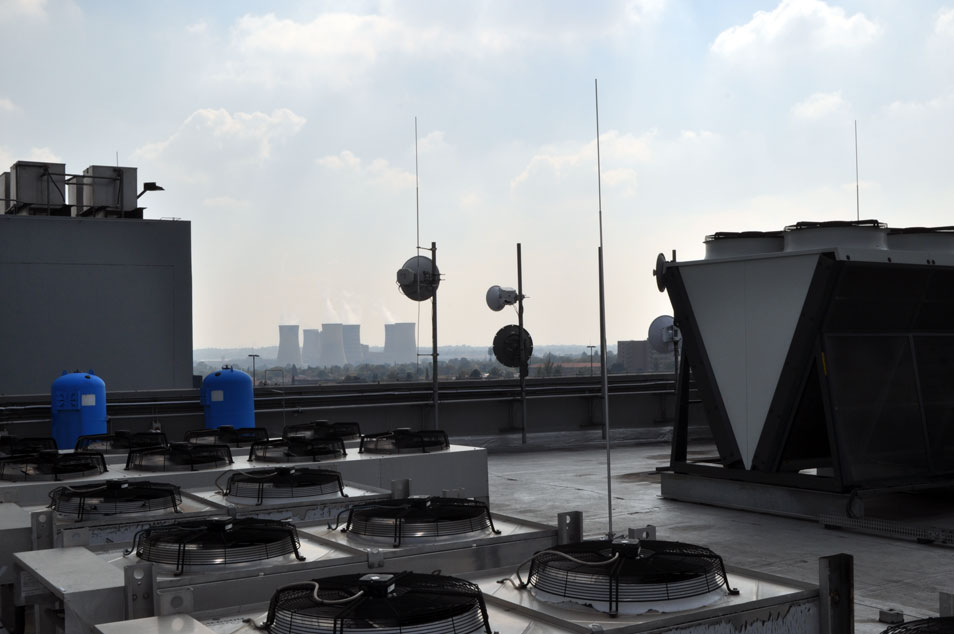 The problems with Eskom’s generation capacity have forced the country’s cities to take matters into their own hands. The City Of Cape Town, for instance, has approached the courts to allow municipalities to purchase power from independent power producers.
The problems with Eskom’s generation capacity have forced the country’s cities to take matters into their own hands. The City Of Cape Town, for instance, has approached the courts to allow municipalities to purchase power from independent power producers.
Unpredictable electricity blackouts have also intensified demands from energy-intensive and energy-dependent businesses to be able to generate their own energy in order to ensure electricity supply.
It’s no surprise then that City Power, which distributes electricity to large parts of Johannesburg, is also positioning itself to be less reliant on power supply from Eskom in light of how intermittent load shedding and the rising cost of electricity have affected it.
To mitigate the costs of load shedding, City Power CEO Lerato Setshedi recently said the municipal utility is exploring “load limiting through the use of smart meters, ripple relays, and by increasing generating capacity at Kelvin power station”.
City Power is also looking to self-provide. According to its 2019/2020 business plan, it has ambitions to create its own energy-generating capability.
City Power spokesman Isaac Mangena said the city’s feasibility study on alternative electricity sources — including battery storage, rooftop solar energy, gas and waste-to-energy — should be concluded by the end of January.
“The study will guide us on how much of which technology should we deploy at which site,” he said. “This will be followed by procurement and implementation.”
Kelvin Power Station
Initially, the municipal utility had also wished not to renew its contract to buy power from Harith-owned Kelvin Power Station when it lapses in 2021.
But with the “uncertainty with regard to Eskom supply” and to cater for the city’s developmental plans, negotiations are underway to extend the contract and increase Kelvin’s generation capacity to the maximum licence capacity of 600MW.
“We see Kelvin as a strategic partner to reduce the over-reliance on Eskom,” said Mangena.
The recent spell of load shedding between October 2019 and January 2020 resulted in City Power making losses of just under R60-million as a result of having to restore substations and transformers that exploded when power returned, loss of equipment, and needing to pay technicians and operators overtime to ensure that electricity was restored after load shedding.
 The loss in income from load shedding adds to the current financial pressures that City Power is experiencing due to illegal connections, billing errors, and changes in customer numbers.
The loss in income from load shedding adds to the current financial pressures that City Power is experiencing due to illegal connections, billing errors, and changes in customer numbers.
In the year to 30 June 2019, the entity reported a net loss of R399-million compared to a loss of R125-million the year prior.
“The negative impact of forced load reduction means interruption of supply to City Power customers and loss of revenue during the downtime,” the business plan reads.
“City Power’s financial health is already in negative territory and loss of further revenue worsens the liquidity risk and reduces the momentum of the turnaround plans that are targeting revenue improvement,” the document further states.
Where the business plan speaks about photovoltaic (PV) generation, City Power explores three areas, the first being “prosumers” — consumers who have installed solar technology to generate power for self-use and can feed in any excess power into the distribution system.
“City Power is geared not just to enable these developments through a network connection but has gone further to develop a tariff which is intended at incentivising any excess power at this level to be put back into the grid,” according to the plan.
Mangena said the target is to implement the prosumer plan in the next financial year, which begins in July.
Secondly, City Power is also looking to invest in the PV space in order to build its own renewable energy production capacity. The benefits would be more competitive prices for electricity over time as the power generated would come at no cost, leaving only maintenance of the infrastructure as an expense.
Capacity and pricing
Thirdly, its position on buying electricity from renewable independent power producers and away from Eskom’s fossil fuel electricity will be dependent on key factors such as the reliability of capacity and pricing.
Integrating energy storage systems is also on the cards, particularly due to the cost-saving benefits.
“With the current electricity pricing regime, particularly from Eskom, energy storage as technology offers an opportunity to buy power from the grid when it is cheap (off-peak prices), store it and use it when the power from the grid is expensive (at peak periods),” states the utility.
Customers who require uninterrupted electricity supply could also use these to ensure their production processes are not compromised by outages.

The softened stance from government on self-generation and municipalities buying from independent power producers would also help in easing the impediments in dealing with load shedding, and to implement their strategy, said Mangena.
However, a major hurdle in City Power’s plans is funding. Its current income has not been enough to contend with a backlog of electrification projects that are “exacerbated by high population influx to the city by locals and migrants in search for better opportunities” who put a strain on the city’s infrastructure.
City Power’s sources of funding — which include external loans organised by the City of Johannesburg, grants and internal funds from selling electricity — have diminished over time because of poor financial performance.
To implement its plan and clear its infrastructure projects, City Power said it will explore alternative financing agreements such as off-balance-sheet funding models and public-private partnerships.
Mangena said a feasibility study into the funding model is also being finalised, and will have to be approved by the city council.
In October last year, the public enterprises department released the road map towards breaking up Eskom’s vertical structure into three legally separate transmission, generation and distribution entities.
The first task under the road map will be to functionally separate transmission by March 2020, while the functional and legal separation of all three entities is signalled to be completed by December 2022.
‘Positive and negative’
In the generation business, government wants to introduce two or more companies to stimulate “intra-company competition” for electricity sales.
“The resultant risk of collapsing boundaries as a result of multiple points of electricity purchases (supply) might have both positive and negative implications,” City Power cautioned.
The downside, however, is the potential “acquisition of high-risk customers in non-affluent areas” such as Soweto. Both of these areas are currently being serviced by Eskom. Soweto owes the power utility R20-billion.
One way City Power aims to proactively deal with the potential risks of the unbundling is in “gaining a seat at the table” of the project so as to influence the decisions that will have any impact on its financial sustainability.
- This article was originally published on Moneyweb and is used here with permission

